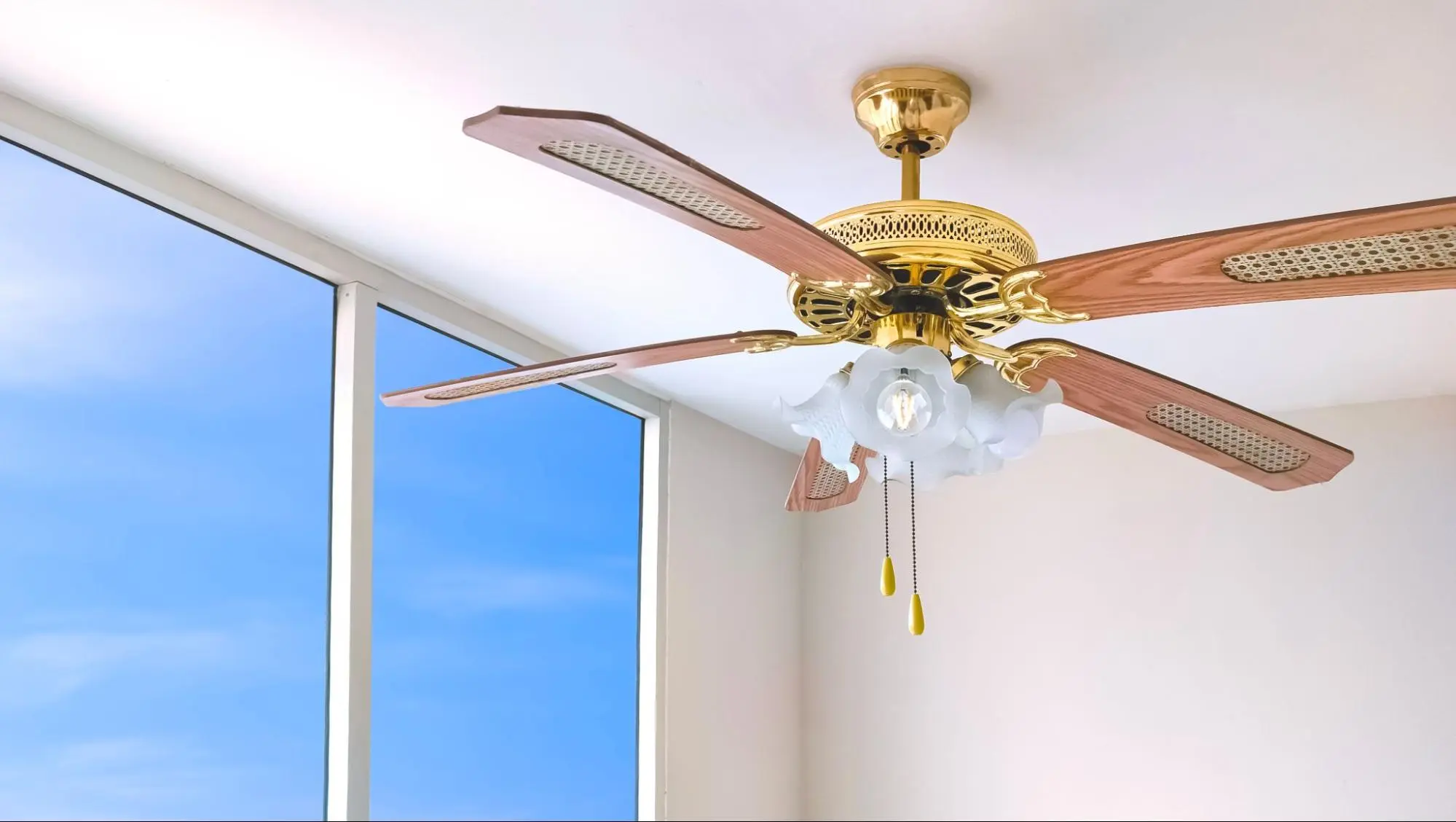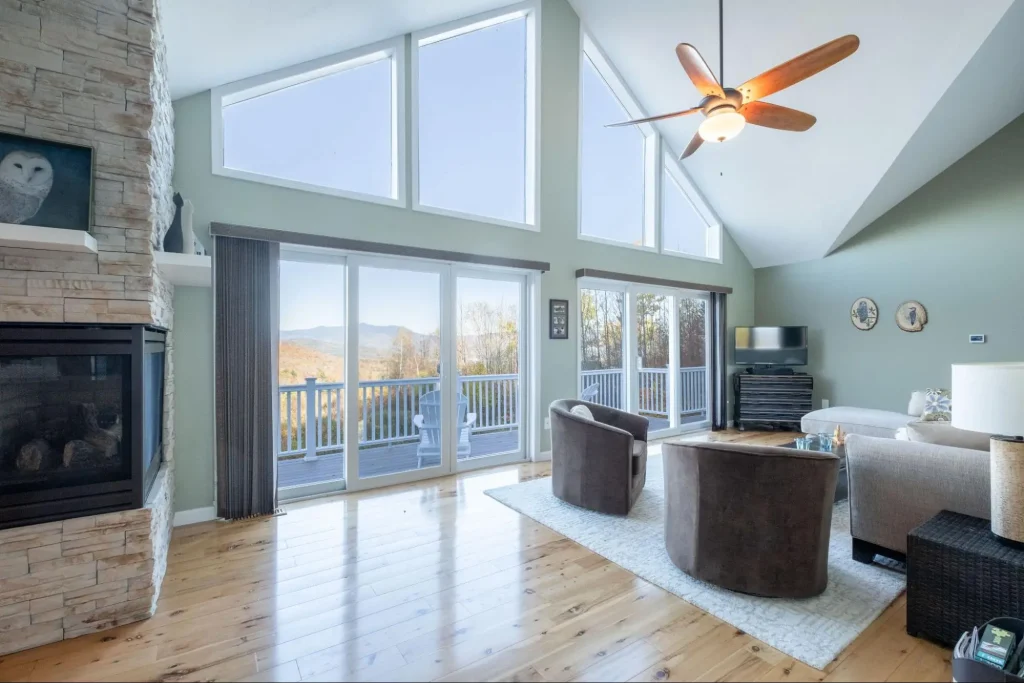
Choosing the right ceiling fan for your home can significantly enhance both comfort and style. When selecting a ceiling fan, it’s crucial to consider the size of the room and the height of the ceiling to ensure optimal airflow. For smaller rooms, fans with a diameter of 29 to 36 inches are suitable, while large rooms may require fans ranging from 50 to 71 inches. You can find more detailed sizing recommendations in this ceiling fan buying guide.
Ceiling fan styles vary widely, allowing you to match a fan with your home decor. You can choose from modern, traditional, and transitional designs to complement your space. Additionally, ceiling fans come with various features such as lighting options and remote controls. For rooms with higher ceilings, using a downrod can position the fan at the correct height for better air circulation.
Ensuring energy efficiency is another important factor when shopping for a ceiling fan. Look for fans with the ENERGY STAR® label, which indicates they meet strict energy efficiency guidelines. Fans with an ENERGY STAR® rating can help reduce your energy bills and environmental impact. Moreover, some fans come equipped with reversible motors, allowing you to change the blade direction for seasonal airflow settings.
Choosing the right ceiling fan means considering several important factors like the type and style of the fan, its size and scale, and the motor and performance capabilities.
Ceiling fans come in various types and styles that can suit any home decor. Common types include standard, modern, traditional, contemporary, industrial, and coastal styles. A standard ceiling fan generally fits most home interiors and serves the basic function of air circulation.
Modern and contemporary fans often feature sleek designs and unique materials like metal or glass. Traditional fans tend to have detailed finishes and more conservative designs. If you prefer rugged and practical over aesthetics, you might look into industrial fans, which are often used in larger spaces. Coastal fans typically have features that withstand humid or salty air environments.
When choosing a fan, make sure it complements the decor of your room while meeting your functional needs.
The size of your ceiling fan is crucial to its effectiveness in a room. Fan sizes are determined by blade span, which ranges from 24 inches to over 80 inches. To choose the right fan size, consider the room size:
Positioning is also important. Ensure the distance from the floor to the fan blades is at least 8 feet. For rooms with high ceilings, use a downrod to position the fan correctly for optimal airflow. Low-profile or “hugger” fans are ideal for ceilings under 8 feet.
The performance of a ceiling fan heavily depends on its motor type. The two primary types are AC motors and DC motors. AC motors are traditional and usually less expensive, but DC motors are more energy-efficient and quieter. Consider the fan’s airflow, measured in CFM (cubic feet per minute). Higher CFM means better air circulation, which is crucial for larger rooms. Energy efficiency is another factor; fans with the ENERGY STAR label use less energy which can save you money in the long run. Make sure the fan you choose offers the best balance between performance and energy efficiency.

Proper installation of a ceiling fan ensures efficient performance and safety. Key factors include ceiling height, proper mounting options, and meeting electrical requirements.
Ceiling height is crucial when installing a ceiling fan. For high ceilings, a longer downrod may be necessary to ensure the fan sits at the optimal height. Downrod lengths vary but typically range from 12 to 72 inches.
For ceilings between 8 to 9 feet, a standard mount is often sufficient. For vaulted or sloped ceilings, you will need an angled mount to keep the fan blades parallel to the floor. For low ceilings, consider a flush-mount option, which attaches the fan directly to the ceiling, maintaining enough clearance from the floor. Always ensure there is at least 7 feet of clearance from the floor to the fan blades.
Choosing the right location for your ceiling fan is essential. For optimal airflow, install the fan in the center of the room. In larger rooms, consider installing two fans for better air distribution.
If you have a sloped ceiling, make sure your fan has an angled mounting option. Avoid placing fans directly over beds or other furniture for safety reasons. In rooms with high ceilings, ensure the downrod is long enough to position the fan adequately. Also, keep the fan blades at least 20 inches away from the nearest wall for safety and better performance.
Before installation, check the electrical requirements and ensure your ceiling can support the fan’s weight. Use an electrical box rated for ceiling fan support, not a standard light fixture box.
Turn off the power at the circuit breaker before starting any wiring work. Connect the wires according to the fan’s instructions, typically by matching the black fan wire to the black ceiling wire, the white fan wire to the white ceiling wire, and the green or bare wire for grounding. Secure all connections with wire nuts and ensure they are tight to prevent any electrical hazards.
Selecting the right ceiling fan involves considering various features and accessories. The choices you make can influence energy efficiency, lighting options, and the level of control you have.
Many ceiling fans come with built-in light kits. You can find fans that use standard bulbs or LED bulbs, which are more energy-efficient. If your goal is to save energy and reduce utility bills, look for fans that are Energy Star certified. These fans are designed to meet strict energy efficiency guidelines.
If you prefer adjustable lighting, some fans offer dimmable options. This allows you to set the right mood in your room. LED bulbs often come with dimming features, adding to their appeal. Light kits can be added to most ceiling fans, making it easy to customize your fan to your lighting needs.
Control options for ceiling fans vary widely. The most basic fans use a pull chain for adjusting speed and turning the light on or off. Wall switches offer another level of convenience, allowing you to control your fan without reaching for a chain.
Remote controls bring added comfort, enabling you to adjust settings from anywhere in the room. Modern fans may come with smart features. These include compatibility with smart home systems like Alexa and mobile apps that allow for remote operation. You can schedule your fan to turn on or off at specific times or control it through voice commands.
Features like smart connectivity can make your home more comfortable and efficient. They are particularly useful when your fan is installed in a hard-to-reach area or if you want advanced settings like scheduling and automation.

Choosing the right ceiling fan for your home means considering the room size, your budget, and the style that matches your decor. Each factor plays a crucial role in ensuring your new fan not only looks good but also functions efficiently.
First, think about where you will install the ceiling fan. A fan that is too small won’t provide enough airflow, while a fan that is too large might overpower the room. Rooms up to 75 square feet need fans with blades up to 36 inches in length. For rooms around 144 square feet, choose fans with 42 to 48-inch blades.
For spaces over 225 square feet, opt for 50 to 54-inch blades. Also, consider the ceiling height. Fans should be placed 8 to 9 feet above the floor for the best air circulation. If your ceiling is higher, you may need a longer down rod to position the fan correctly.
Your budget will greatly affect your options. Fans vary widely in price depending on their features, materials, and brand. Establish a budget before you start shopping. Higher-end fans often offer better performance, longer warranties, and more durable materials.
Even if you’re on a tight budget, look for fans with good reviews on performance and reliability. Check for energy-efficient models which can save you money on your power bill in the long run. Remember, sometimes spending a bit more upfront can result in long-term savings.
Ceiling fans come in a wide array of styles, from modern to traditional, and in various finishes. The design of your fan should complement your room’s decor. For example, a sleek, metallic fan might suit a modern living space, while a wooden finish could match a more rustic setting.
Consider the color scheme and existing fixtures in the room. Some fans come with integrated light kits, which can add both functionality and style. Make sure the finish of the fan matches or complements other hardware and decorative elements in the room.
Choosing the right ceiling fan involves considering various factors to ensure it meets your needs.
Firstly, consider the size of the room. For small rooms up to 75 sq. ft., a fan with 36-inch blades or smaller is ideal. Larger rooms need bigger blades.
Pay attention to the ceiling height. Fans should be placed 8 to 9 feet above the floor for optimal airflow. Use a downrod for higher ceilings.
Think about the design and style of the fan. Modern, traditional, or industrial styles can impact the look of your room. Color options also matter.
Mounting options are crucial. Flush mount fans work best in rooms with low ceilings. For high or sloped ceilings, choose a fan with an angled mounting option.
Check the energy efficiency of the fan. Look for Energy Star ratings to help reduce electricity costs.
For small rooms up to 100 square feet, choose a fan that is 29 to 36 inches in diameter. For large rooms up to 400 square feet, pick a fan that is 36 to 50 inches. Great rooms over 400 square feet need a fan that is 50 to 71 inches in size.
When selecting a ceiling fan with lights, consider the room’s natural lighting, the purpose of the lighting, and the style of the light fixtures. Make sure the light output fits the room’s needs and complements the fan design. Energy efficiency is also important for long-term savings.
Choose a ceiling fan color that complements your overall room decor. If your room has neutral tones, opt for a fan in a similar shade. For bolder decor, a contrasting color can make a statement. Consider the room’s lighting and furniture when selecting the fan color to ensure a cohesive look.
Yes, the number of blades affects both efficiency and airflow. Fans with fewer blades (typically three) can move air more effectively and with less drag, making them more energy efficient. More blades can distribute air more smoothly and quietly but might have slightly reduced efficiency.